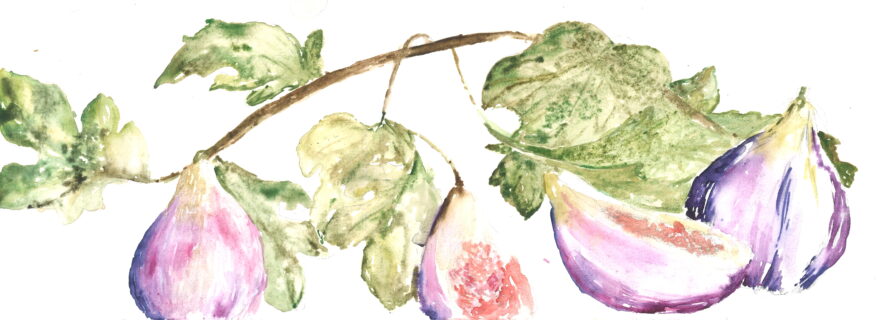Ancient Judaism and Regenerative Agriculture
Note. This piece reflects the opinions and beliefs of the author, separate from those of the Green Office.
Last month (what is referred to as February 2023 in the Julian calendar, but what the Hebrew lunar calendar counts as ‘Shevat’ in the year 5783), Jewish men, women, and children around the world feasted on juicy figs and dates, snacked on decadent dried fruits and nuts, and planted trees in gardens far and wide. Why? They were celebrating the Jewish holiday of “Tu B’Shevat” (ט״ו בשבט).
WHAT CAN ANCIENT JUDAISM TEACH US ABOUT ENVIRONMENTALISM?
According to the Talmud (an ancient Jewish text / code of law), when the Jewish people finally entered the land of Israel after wandering the desert for forty years, they began to settle and plant trees. However, God warned the people to not simply plant and pluck the trees, but to view them as holy and sacred. In fact, God instructed the Jews that they should only eat the fruits of the trees three full years after they had been planted – only after the plants had time to grow, prosper, and develop. Laws like these fostered a caring awareness towards trees, their yields, and our relationship towards them and the beautiful fruits that nourish and sustain us. Because of this, we celebrate that awareness every year with Tu B’Shevat, or the ‘New Year for Trees’.
This is not the only place in Judaism that a love towards nature is not only mentioned but commanded. In the book of Exodus, in the Old Testament, or the Torah, it is stated that for “six years you shall sow your land and gather in its produce, but in the seventh year you shall let it rest and lie fallow.” This type of farming practice used by ancient Jewish farmers was called ‘Shmita’. Just as Jewish people rest on the seventh day of each week, the Sabbath, they allow the land to rest every seventh year as well. This allowed the land to rest and heal and proved to have strong benefits for soil health and fertility.
Today, there has been a resurgence of awareness towards how we are treating the land, or rather mistreating the land through harmful practices such as tilling, pesticides, deforestation, and toxic farm chemicals. A continuation of these practices will not only do irreversible damage to our beautiful lands and the ecosystems that depend on it, but threaten our farmers, the availability of crops, and the food security of the people on our planet. To counter these dangers, there has been a new wave of agricultural practices referred to as ‘Regenerative Agriculture’.
WHAT IS REGENERATIVE AGRICULTURE?
According to Regenerative Organic Certified, a visionary organisation established to promote and foster regenerative agriculture around the globe, Regenerative Agriculture (RA) is “a holistic approach to farming that treats healthy soil as the foundation of good farming while taking good care of the farmers, farm workers, and farm animals who work and live on the land.”
Some of these practices include:
- Crop Rotation: planting different crops at different times on the same land to improve soil health.
- Minimal Soil Disruption: avoiding harmful practices like over-tilling.
- Avoiding Pesticides and Other Toxic Chemicals.
- Rotational Grazing: moving cattle around different areas of the farm to allow the cow manure to sink into the soil and give time for the land to rest (similar to the Jewish ‘Shmita’).
- Composting.
To learn more about RA and specific practices, click here.
Although RA is a relatively new trend, its practices have had roots in civilizations for thousands of years. The ancient Judea people are not the only ancient culture we should be learning from in regard to healing our land and our planet. All around the world, the benefits of the practices of indigenous communities are coming to light (though they notably are not getting the recognition they deserve). ‘Intercropping’, or grouping certain types of plants together to maximize soil health, originally derived from Indigenous American groups. ‘Agroforestry', or 'chagra' to its native founders in the Columbian Amazon, offers a set of forest-based agricultural techniques that are highly fluid and adaptable to match the ever-changing atmosphere of the Amazon and other forest landscapes. ‘Terracing', a land design method that protects soils and crops from heavy rains, was engineered by indigenous tribes in Central and South America. And the list goes on and on. We have much to learn from these indigenous traditions, and their offspring that remain today. However, I believe it is also important not to be too divisive between “their” practices, and “ours”. In order to move forward and save the soil, land, planet, and ourselves, we need to recognise and reflect on our differences, but also honour that we are the All-One human race, and we need to use those differences to come together and unite in love.
UNITING IN LOVE
I write this having just returned from a trip to Israel, the Holy Land, and Land of my Ancestors. While I feel a deep connection to my past, my family, and my religion there, it is not to say the land is without much contestation. I have extremely complex feelings about the state of the nation today, and the controversies that arise on a daily basis, especially in regard to my own subjectivities, culture, and history.
I felt this deeply as I stood in front of the Western Wall – the most holy and sacred place in the world for Jewish people. I stood there for a long time, contemplating the war, hate, death, and pain that has occurred, and has continued to occur, for so many thousands of years. All for me to stand in front of these magical, solid stones. As I pondered this, under the bright blue sky and the warm desert sun, I decided to say a prayer. I am not a religious person, but I figured in such a holy place – if there’s a God out there, maybe they will listen. The prayer is prayer for peace. I chanted it as a call for an ultimate manifestation of peace and love. Peace between each other, peace for the land, and a peaceful reunification between humans and the Earth we live on. For those interested, I have included the prayer below. Regardless of faith, nationality, orientation, or beliefs, I hope we can all strive for Peace and Love for each other and the Planet.
**
A PRAYER FOR PEACE
יְהִי רָצוֹן מִלְפָנֶֽיךָ יהוה אֱלֹהֵינוּ וֵאלֹהֵי אֲבוֹתֵֽינוּ וְאִמּוֹתֵֽינוּ שֶׁתְּבַטֵּל מִלְחָמוֹת וּשְׁפִיכוּת דָּמִים מִן הָעוֹלָם וְתָמְשִׁיךְ שָׁלוֹם גָּדוֹל וְנִפְלָא בָּעוֹלָם, וְלֹא־יִשָּׂא גוֹי אֶל־גּוֹי חֶֽרֶב | May it be your will YHVH our elo’ah, and elo’ah of our forefathers and foremothers, That we see the day when war and bloodshed cease from the work, when a great peace and wonder will embrace the whole world. Then nation will not threaten nation, and the human family will not again know war.[2] |
רַק יַכִּֽירוּ וְיֵדְעוּ כׇּל־יוֹשְׁבֵי תֵבֵל הָאֱמֶת לַאֲמִתּוֹ אֲשֶׁר לֹא בָֽאנוּ לָזֶה הָעוֹלָם בִּשְׁבִיל רִיב וּמַחֲלֹֽקֶת וְלֹא בִּשְׁבִיל שִׂנְאָה וְקִנְאָה וְקִנְתּוּר וּשְׁפִיכוּת דָּמִים. רַק בָּֽאנוּ לָעוֹלָם כְּדֵי לְהַכִּיר אוֹתְךָ, תִּתְבָּרַךְ לָנֶֽצַח. | Rather, let all who live on Earth recognize and know the truth in its truest sense, that we haven’t come into this world for fighting and controversy, nor for hatred, envy, provocation or bloodshed, rather we have come into the world in order to know You, may You be eternally blessed. |
Compassionate God, bless the leaders of all nations with the power of compassion. | |
וּבְכֵן תְּרַחֵם עָלֵֽינוּ וִיקֻיַּם בָּֽנוּ מִקְרָא שֶׁכָּתוּב׃ וְנָתַתִּֽי שָׁלוֹם בָּאָֽרֶץ וּשְׁכַבְתֶּם וְאֵין מַחֲרִיד (ויקרע כו:ו) וְהִשְׁבַּתִּֽי חַיָּה רָעָה מִן־הָאָֽרֶץ וְחֶֽרֶב לֹא־תַעֲבֹר בְּאַרְצְכֶם. (אמוס ה:כד) וְיִגַּל כַּמַּֽיִם מִשְׁפָּט, וּצְדָקָה כְּנַֽחַל אֵיתָן. כִּי־מָלְאָה הָאָֽרֶץ דֵּעָה אֶת־יְהוָה כַּמַּֽיִם לַיָּם מְכַסִּים׃ (ישעיה יא:ט) | Fulfill the promise conveyed in Scripture: “I will bring peace to the land, and you shall lie down and no one shall terrify you.”[3] “I will rid the land of vicious beasts and it shall not be ravaged by war.”[4] “Let justice and righteousness flow like a mighty stream. Let God’s peace fill the earth as the waters fill the sea.”[5] |
And let us say: Amen. |





0 Comments